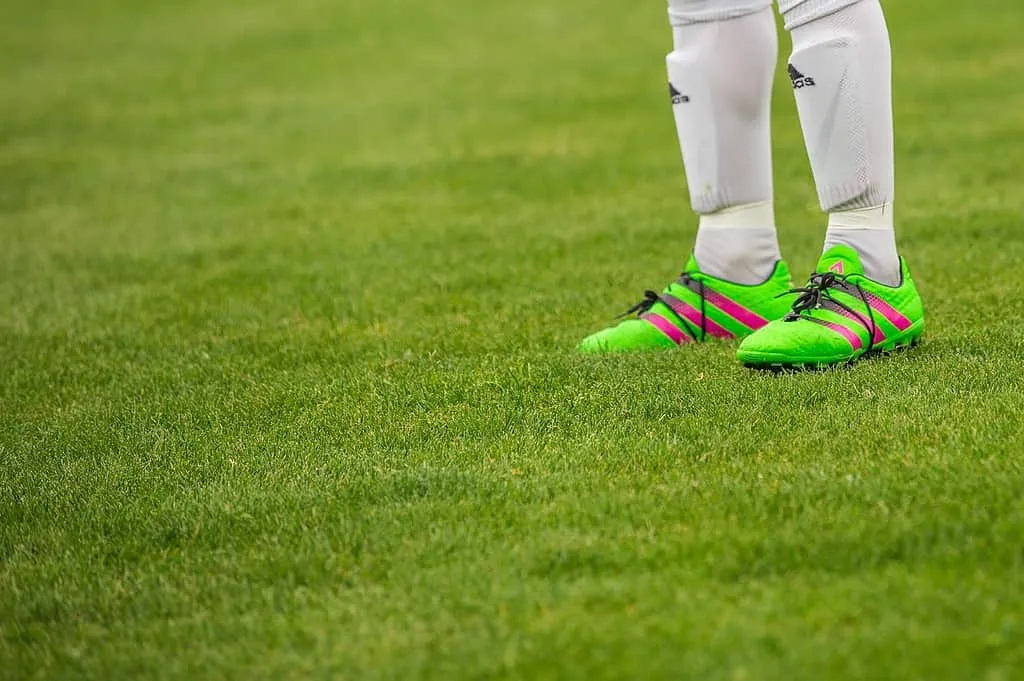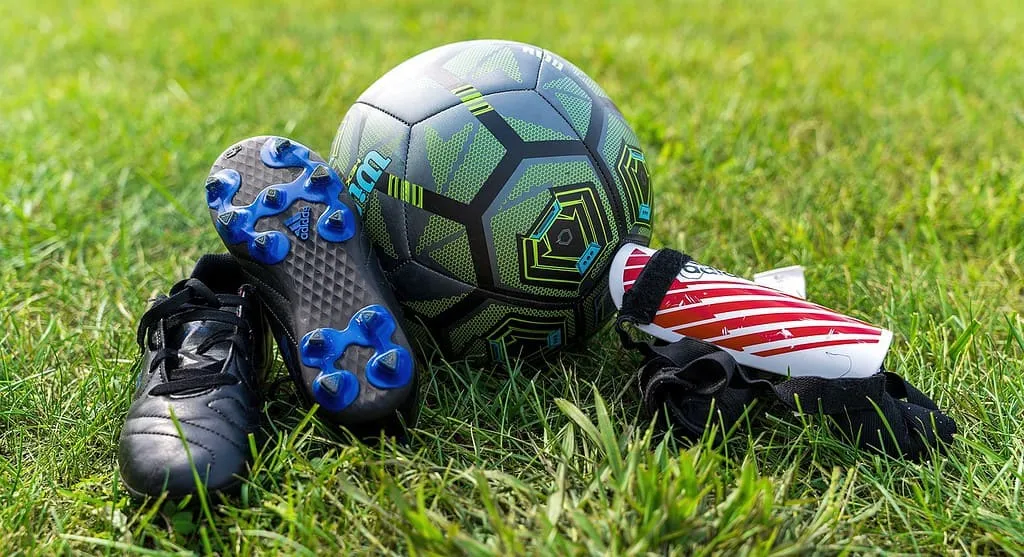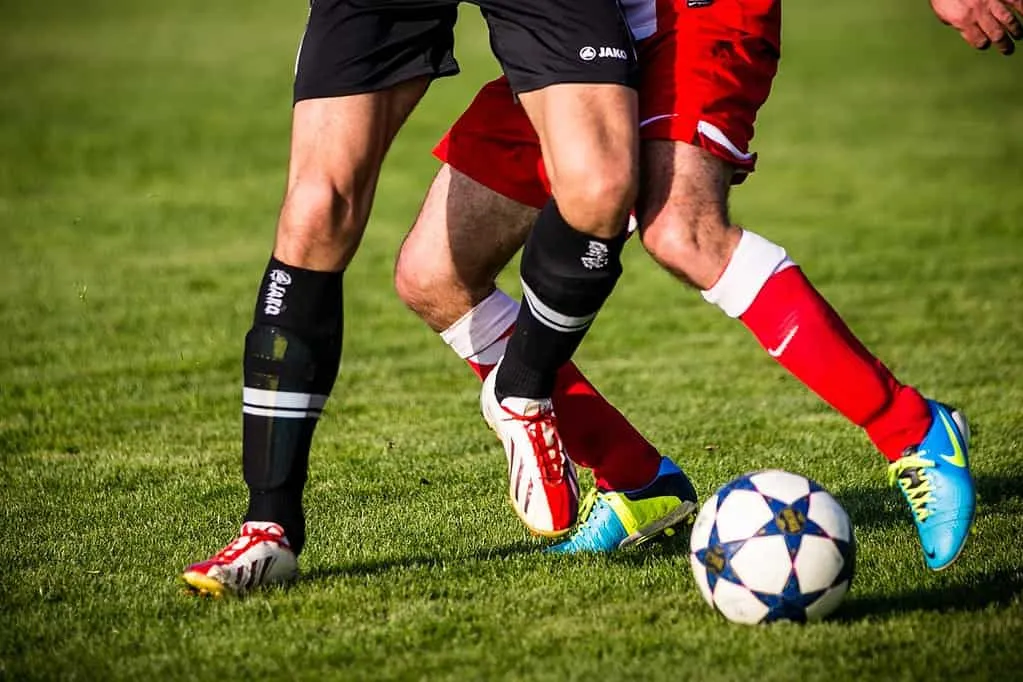Hey there, fellow soccer enthusiast! Have you ever pondered whether those awe-inspiring professional footballers, with their gravity-defying skills and blistering pace, actually wear shin guards?
Well, wonder no more! We’re about to embark on an enlightening journey into the intriguing realm of soccer players, and the essential role shin protection plays in their game.
Get ready to uncover the mysteries surrounding the types of shin guards preferred by pros, the reasons they choose certain styles, and the all-important FIFA regulations that govern these indispensable pieces of equipment.
From the minimalist slip-in shin guards to the fortress-like ankle protection models, we’ll explore the diverse world of soccer shin protection and its impact on player safety and performance.
So, prepare for an entertaining and informative deep dive into the exciting intersection of soccer, shin guards, and the professionals who rely on them to keep their legs safe and sound while they dazzle us on the field.
The Must-Wear Rule: FIFA’s Take on Shin Guards
FIFA, often seen as the omnipotent soccer governing body, has left no room for doubt regarding players wearing shin guards. They’ve set some specific requirements to protect everyone on the field.
First, shin guards must be made of a suitable material that provides ample protection against impacts. Think sturdy plastics, composites, or even foam – definitely not a couple of cardboard cutouts taped to your legs!

Next, FIFA insists that socks completely cover shin guards. Why, you inquire? Actually, this practice isn’t solely for looking uniform; having socks over shin guards helps maintain their placement and prevents them from shifting during a match.
Nobody wants a rogue shin guard flopping around mid-game, now do they?
To sum up, all soccer players must wear shin guards. We must take precautions when it comes to keeping the beautiful game safe and enjoyable for everybody involved: be it an amateur who plays regularly on weekends or a professional vying for millions of adoring fans’ attention.
The Art of Wearing Tiny Shin Guards: Jack Grealish Style
You may have noticed some pro footballers, like Jack Grealish, sporting minuscule shin protection. Fear not. They’re still complying with the rules.
These tiny shin guards are designed to provide just enough coverage to reduce the risk of injury while giving players maximum freedom to showcase their fancy footwork.
Types of Shin Guards: A Buffet of Choices
Slip-In Shin Guards: The Minimalist’s Dream
Many professional soccer players prefer slip-in shin guards for their lightweight and non-restrictive design. They’re typically held in place by compression sleeves or simply nestled under football socks.
However, they might not offer the best protection compared to other options.
Ankle Protection Shin Guards: A Fortress for Your Legs
These shin guards come with built-in ankle protection for players who want to keep their precious ankles safe from flying cleats. While they might be bulkier, they provide comprehensive coverage and might just save you from an unwanted trip to the physio.
Sock-Style Shin Guards: The All-In-One Solution
This type of shin guard is integrated into a specially designed sock, offering a snug fit and streamlined look. While they might not provide the same level of protection as other options, they’re popular among players who prioritize convenience and style.
Why Pro Soccer Players Wear Really Small Shin Guards
Soccer is an exhilarating, dynamic sport that requires lightning-fast reactions and nimble agility. Players need to be able to alter direction with velocity and become agile when accelerating or decelerating in a flash – all while maintaining maximum mobility. This level of athletic prowess can only be attained through maximally efficient movement!
Enter the small shin guard. These compact, lightweight protectors are designed to give players maximum freedom of movement without weighing them down or impeding their stride.

They allow for more natural and fluid movement, which can be essential in tight situations on the field. Moreover, these garments give players greater flexibility and reduced pressure on their bodies. This can be particularly beneficial for individuals restricted by their bulky alternatives.
However, there’s always a trade-off. Smaller shin guards, while offering improved mobility and comfort, may not provide the same level of protection as their larger counterparts.
The reduced surface area and thinner materials might leave players more vulnerable to impacts from tackles, collisions, and wayward balls. This could result in bruising or more severe injuries if a player is caught in an especially violent contest.
Ultimately, the decision is a matter of preference and determining the most important aspects. For some players, agility above all else will dictate whether they accept the risk with smaller shin guards, while others seek more robust protection to safeguard against potential injuries.
Whatever your choice, always remember that safety should come first on the soccer field.
Can Players Get Away with Not Wearing Shin Guards?
In short, no. FIFA’s Laws of the Game state that shin guards are mandatory for every professional match. Referees are responsible for ensuring players comply, and failure to do so could result in a player being asked to leave the field.
The Evolution of Soccer Shin Guards
Since soccer’s early days, shin guards have proven to be a vital accessory for players. From crude leather pads to today’s cutting-edge advanced materials, shin guards continue to evolve to provide superior security and comfy comfort.
Playing the Game Safely
Shin guards are essential for reducing the risk of serious leg injuries and ensuring players enjoy the beautiful game without worry.

To help ensure your safety on the court, you must equip yourself with top-notch shin guards. These can give you optimal protection against impacts and enhance mobility when playing.
Are you ready to embrace the world of soccer shin guards? Then, don’t dawdle – pick up a set and bring an extra dose of assurance for your matches! And remember, even the most skilled professionals wear them – so there’s no shame in protecting your shins!


